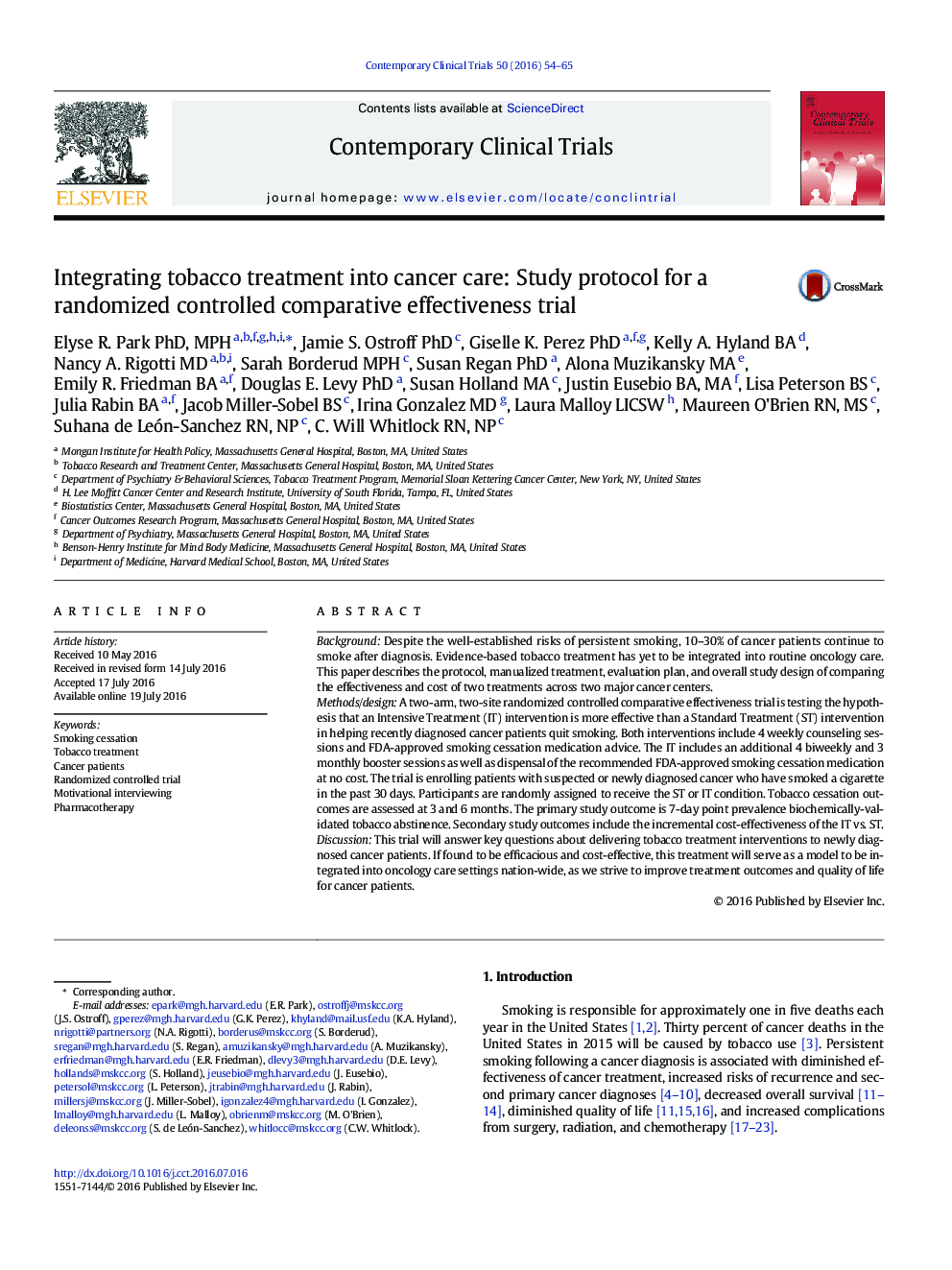| Article ID | Journal | Published Year | Pages | File Type |
|---|---|---|---|---|
| 3462594 | Contemporary Clinical Trials | 2016 | 12 Pages |
BackgroundDespite the well-established risks of persistent smoking, 10–30% of cancer patients continue to smoke after diagnosis. Evidence-based tobacco treatment has yet to be integrated into routine oncology care. This paper describes the protocol, manualized treatment, evaluation plan, and overall study design of comparing the effectiveness and cost of two treatments across two major cancer centers.Methods/designA two-arm, two-site randomized controlled comparative effectiveness trial is testing the hypothesis that an Intensive Treatment (IT) intervention is more effective than a Standard Treatment (ST) intervention in helping recently diagnosed cancer patients quit smoking. Both interventions include 4 weekly counseling sessions and FDA-approved smoking cessation medication advice. The IT includes an additional 4 biweekly and 3 monthly booster sessions as well as dispensal of the recommended FDA-approved smoking cessation medication at no cost. The trial is enrolling patients with suspected or newly diagnosed cancer who have smoked a cigarette in the past 30 days. Participants are randomly assigned to receive the ST or IT condition. Tobacco cessation outcomes are assessed at 3 and 6 months. The primary study outcome is 7-day point prevalence biochemically-validated tobacco abstinence. Secondary study outcomes include the incremental cost-effectiveness of the IT vs. ST.DiscussionThis trial will answer key questions about delivering tobacco treatment interventions to newly diagnosed cancer patients. If found to be efficacious and cost-effective, this treatment will serve as a model to be integrated into oncology care settings nation-wide, as we strive to improve treatment outcomes and quality of life for cancer patients.
